12 Pulling Exercises for Whole Body Strength Training

Pulling exercises are strength-training exercises which primarily involve pulling an object or resisting an external force toward your body.
These exercises engage specific muscle groups and promote various movements.
Back pain and injuries are a common concern among athletes. Research [1] indicates that including pulling exercises in workout regimen is a great way to build your back muscles and get rid of pain.
Here’s a breakdown of pulling exercises ideal for upper and lower body strength training:
Pulling Exercises Main Categories
Pulling exercises are divided into two main categories based on the direction of the pull:
- Vertical Pulls:
Vertical pulling exercises involve moving a resistance vertically towards your body or moving your body vertically towards a fixed object.
Examples: Pull-ups and lat pulldowns.
Target Muscle Groups: Lats (latissimus dorsi), biceps, trapezius, and rear deltoids.
- Horizontal Pulls:
Horizontal pulling exercises focus on pulling a resistance horizontally towards your body or moving your body horizontally relative to a fixed point.
Examples: Rows and face pulls.
Target Muscle Groups: Rhomboids, middle and lower trapezius, rear deltoids, biceps, and forearms.
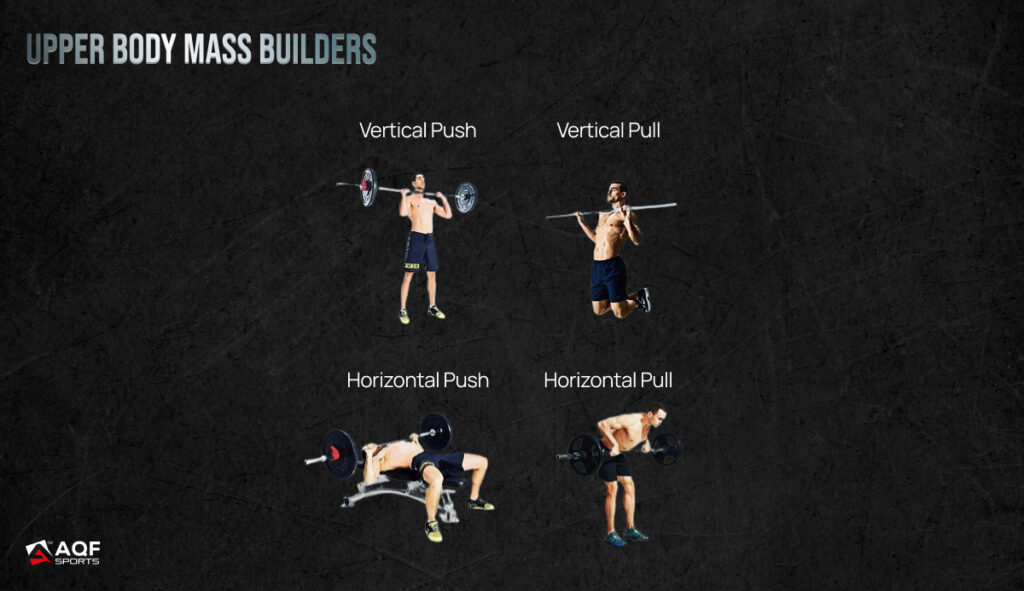
Pulling Exercises Target Following Muscles
The primary muscle groups targeted in pulling exercises include:
Latissimus Dorsi (Lats):
Lats are Broad, flat muscles in the upper and middle back.
These are the Primary muscles responsible for most of the pulling action during pulling exercises.
Lats contract to begin the arms closer to the body, particularly in vertical and horizontal planes.
Rhomboids:
Rhomboids are located between the shoulder blades in the upper back.
These muscles retract the shoulder blades.
During pulling exercises, especially horizontal pulls, the rhomboids contract to pull the shoulder blades together, aiding in proper posture and shoulder stability.
Suggested Read: The 7 Best Back Exercises to Strengthen Back Muscles
Trapezius (Traps):
Traps Extend from the base of the skull down to the middle of the back.
Traps are involved in vertical and horizontal pulling exercises.
The upper traps assist in elevating the shoulders during certain pulls, while the lower traps play a role in scapular stabilization.
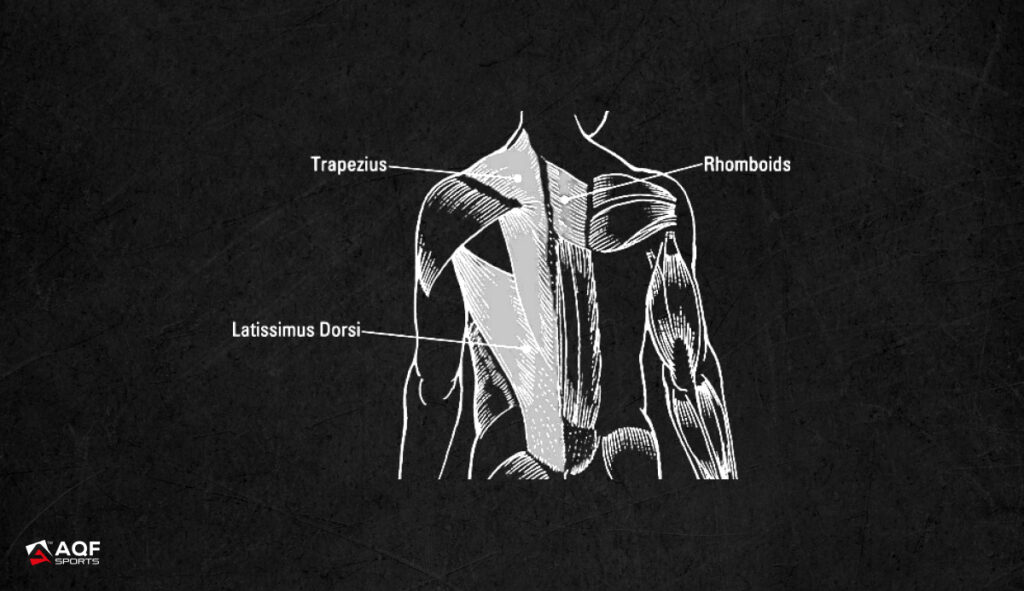
Biceps Brachii:
Biceps are located in the front of the upper arm.
Biceps bend the elbow during pulling movements especially during gripping or pulling a weight.
The biceps contract to flex the elbow joint, working in conjunction with other muscle groups.
Suggested Read: Benefits of an Arm Blaster for Upper Arm Bulking (Bicep Bomb – Really?)
Posterior Deltoids:
These muscles are located at the back of the shoulder.
Deltoids come into action during horizontal pulling exercises.
Delts extend (straighten) and abduct (move it away from body ) the shoulder joint during pulls.
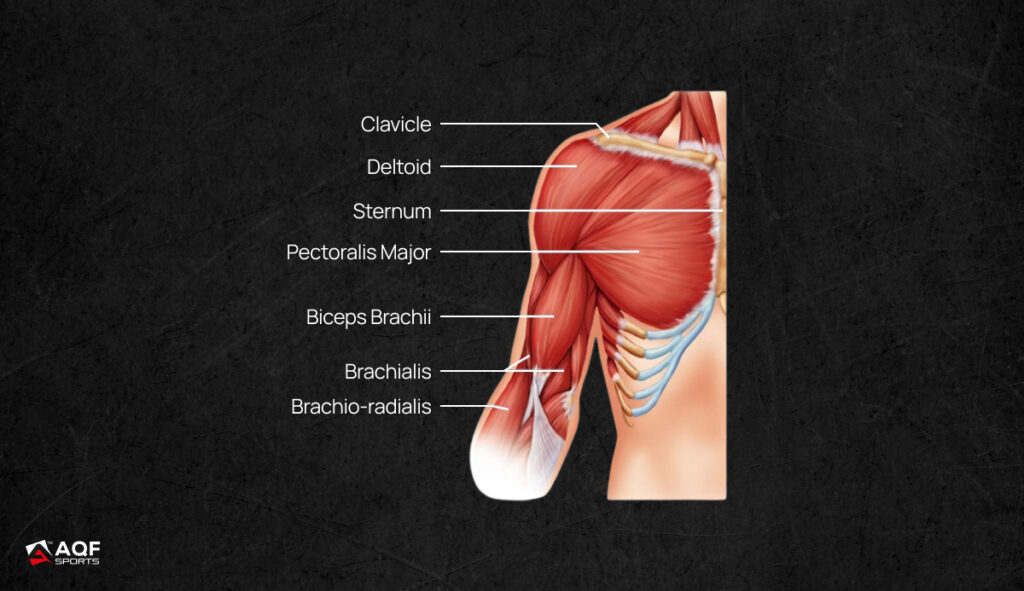
Forearms:
Forearm muscles include:
- Flexors on the palm side and
- Extensors on the back of the forearm.
Forearms provide Grip strength which is vital for holding onto weights, handles, or equipment during pulling exercises.
The forearm muscles maintain a secure grip to support pulling movements execution.
Core Muscles:
The core muscles include the:
- Rectus abdominis (front)
- Obliques (sides)
- Erector spinae (lower back).
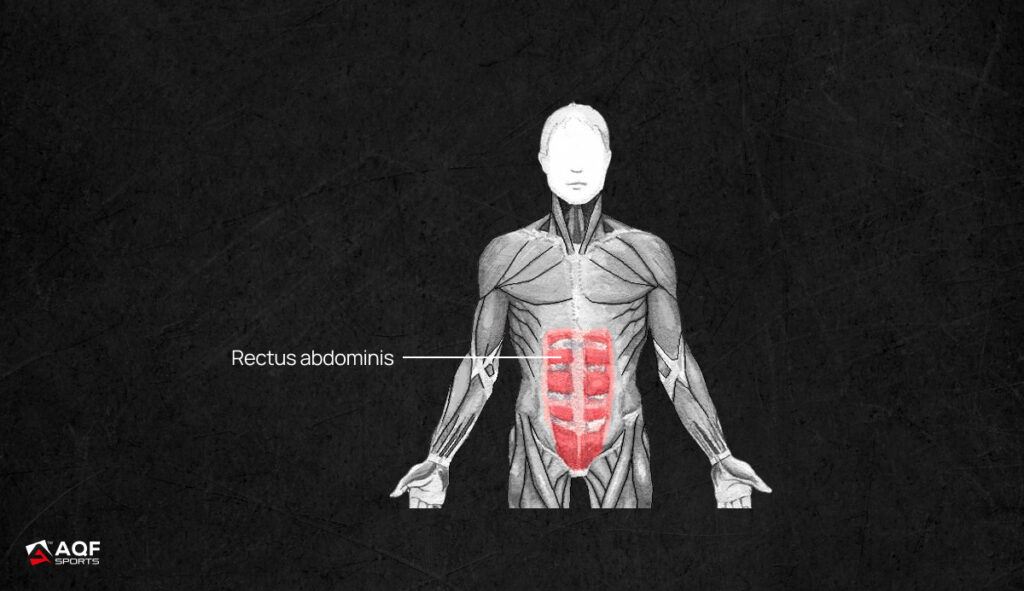
These muscles have a stabilizing role during pulling movements and help in maintaining proper posture and balance.
Contraction of the core muscles stabilizes the trunk and prevents excessive sway or arching of the back.
Pulling Exercises Involve 3 Main Movements

Concentric Contraction (Pulling Phase):
In this phase, your muscles actively shorten while generating force.
During pulling exercises, it’s when you’re actively pulling a weight or resisting an external force towards your body.
Eccentric Contraction (Lengthening Phase):
This phase involves controlled lengthening of the muscles while under tension.
During pulling exercises, it typically happens when you’re returning a weight to its starting position or resisting the stretching of the muscles as they lengthen.
Isometric Contraction (Stabilization Phase):
In pulling exercises, this type of contraction occurs when there is tension in the muscles, but their length remains relatively constant.
Isometric contractions are often used for maintaining posture and stabilizing the body during pulling movements.
Upper Body Pulling Exercises
1. Ring Rows:
Setup:
Hang gymnastic rings at chest height.
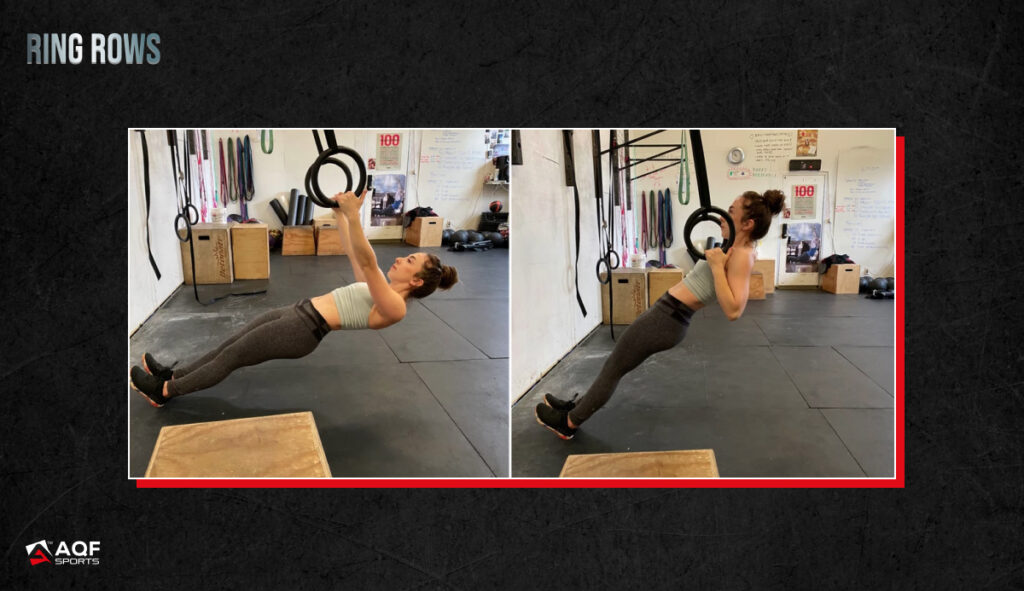
How to Do It:
- Stand facing the rings, holding one in each hand.
- Walk your feet forward, lean back slightly, and pull your chest towards the rings.
- Lower yourself down slowly.
- Keep your body straight.
Tips:
- Maintain a straight body line from head to heels.
- Adjust the angle by walking your feet closer to or farther from the rings to increase or decrease resistance.
- Wear hand wraps for added protection
2. Towel Pull-Ups:
Setup:
Drape a towel over a pull-up bar to make two loops.

How to Do It:
- Grab a loop in each hand and hang from the towel.
- Pull your chest up towards the towel.
- Lower yourself down with control.
- Maintain a steady body position.
Tips:
- Focus on gripping the towel loops tightly.
- Keep your body steady and avoid swinging during the exercise.
3. Rope Climbs:
Setup:
Hang a thick rope from an overhead point.

How to Do It:
- Stand facing the rope with your feet shoulder-width apart.
- Climb up the rope using your arms and legs.
- Descend carefully.
- Use your legs to help, so your arms don’t tire too quickly.
Tips:
- Wear appropriate footwear for grip.
- Use your legs to push off when ascending the rope, conserving arm strength.
4. Single-Arm Dumbbell Rows with a Twist:
Setup:
Use a bench and a dumbbell.
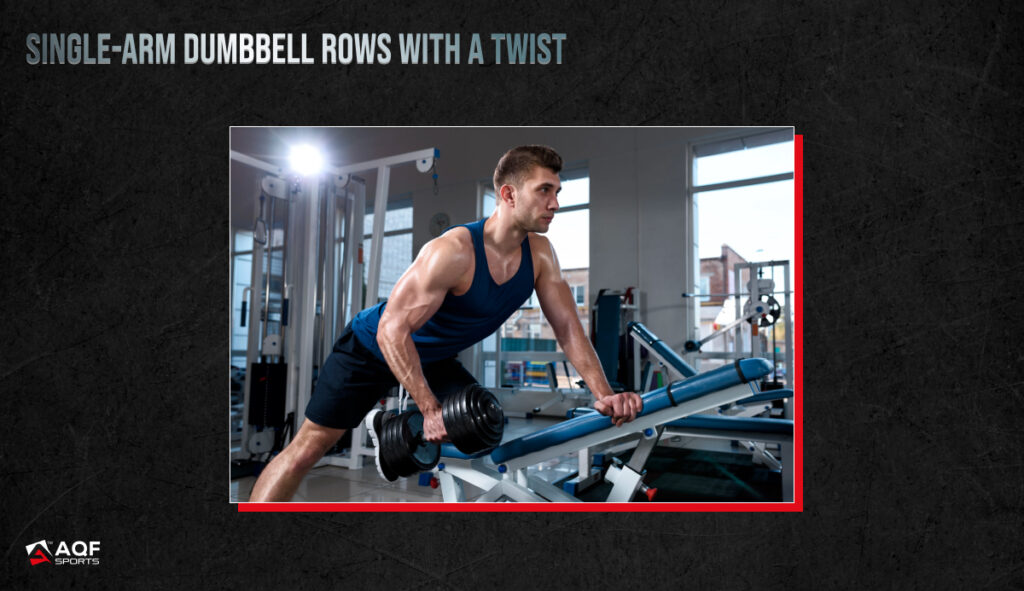
How to Do It:
Put one knee and one hand on the bench, opposite the dumbbell.
- Pick up the dumbbell and pull it towards your hip.
- Twist your torso slightly while you do this.
- Lower the dumbbell slowly.
Tips:
- Focus on squeezing your lat muscle.
- Control the twist to engage your obliques and upper back effectively.
5. Bodyweight Rows on Suspension Straps:
Setup:
Hang suspension straps from an overhead point.
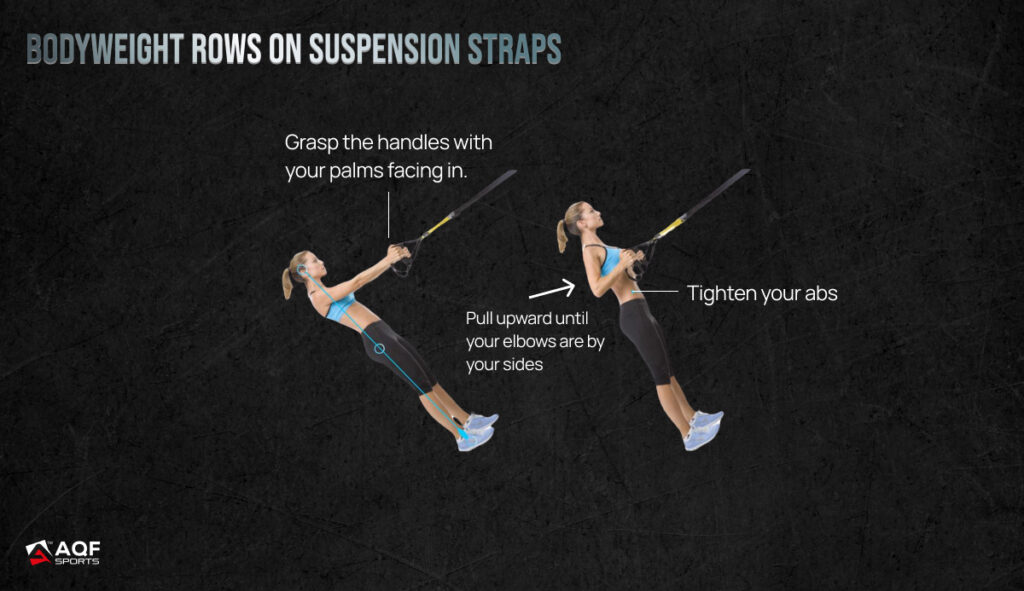
How to Do It:
Hold a strap in each hand and lean back with your body straight.
- Pull your chest towards the straps by bending your elbows.
- Straighten your arms to go back to the starting position.
- Adjust the angle to control the resistance.
Tips:
- Keep your body in a straight line.
- Experiment with different angles to vary the intensity of the exercise.
6. Medicine Ball Slams:
Setup:
Stand with your feet shoulder-width apart, holding a medicine ball overhead.

How to Do It:
- Slam the ball into the ground in front of you.
- Catch the rebound and repeat.
Tips:
- Engage your lats and core when you lift and slam the ball.
- Use your whole body to generate power in the slam.
Lower Body Pulling Exercises
1. Sled Pulls:
Setup: Put on a harness and attach it to a weighted sled.
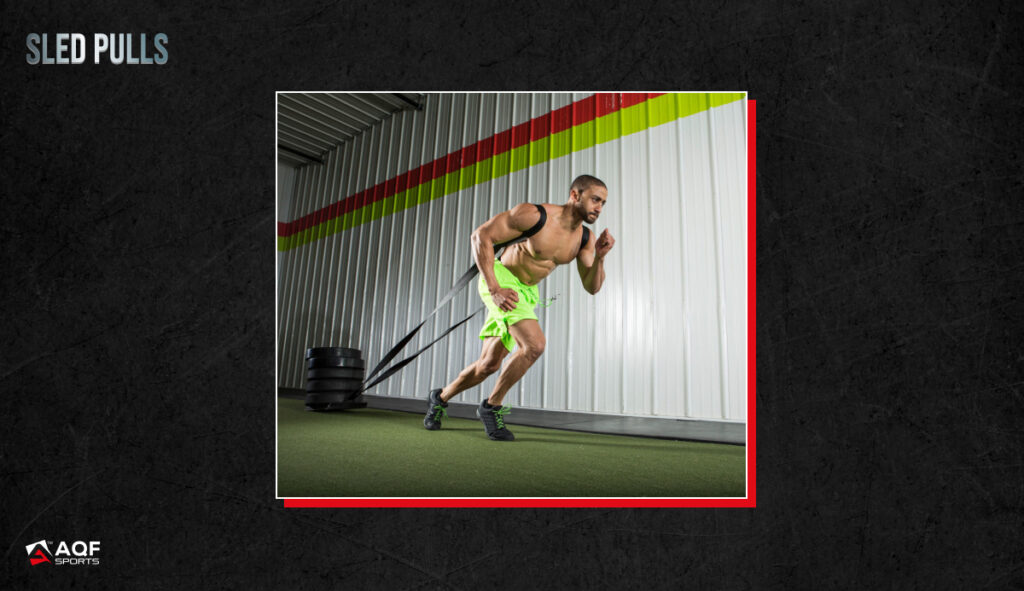
How to Do It:
- Walk forward while pulling the sled behind you.
- Keep your back straight and focus on using your butt, hamstrings, and thighs.
- Walk for a set distance or time.
Tips: Start with a light weight and add more as you get stronger.
2. Kettlebell Swings:
Setup: Stand with your feet shoulder-width apart, holding a kettlebell with both hands.
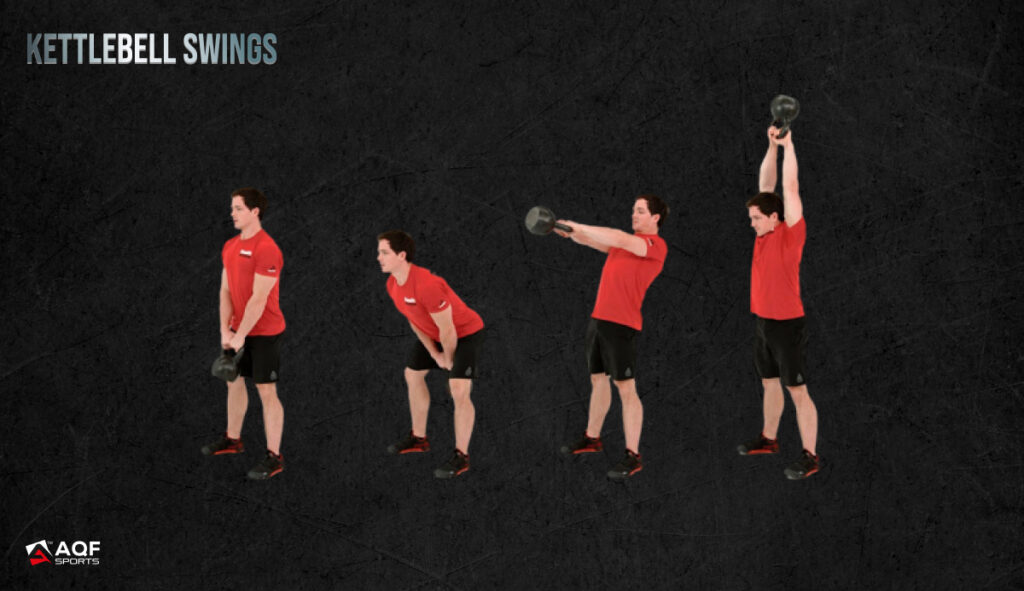
How to Do It:
- Bend at your hips and swing the kettlebell between your legs.
- Quickly push your hips forward to swing the kettlebell up to chest level.
- Let it swing back down between your legs.
Tips: Use your hips to power the movement.
3. Farmer’s Walk with Trap Bar:
Setup: Stand inside a special bar with weights on the sides.
How to Do It:
- Hold the handles and stand up straight.
- Walk with short steps while gripping the bar.
- Squeeze your butt and forearms.
Tips: Keep your back straight and avoid rounding it.
4. Tire Flips:
Setup: Find a big tire.
How to Do It:
- Squat down and grab the bottom of the tire.
- Lift it by pushing with your legs and hips.
- Flip it over by pushing it away from you.
Tips: This works both your upper and lower body.
5. Sumo Deadlift High Pull:
Setup: Stand with wide feet, holding a kettlebell or barbell with both hands.
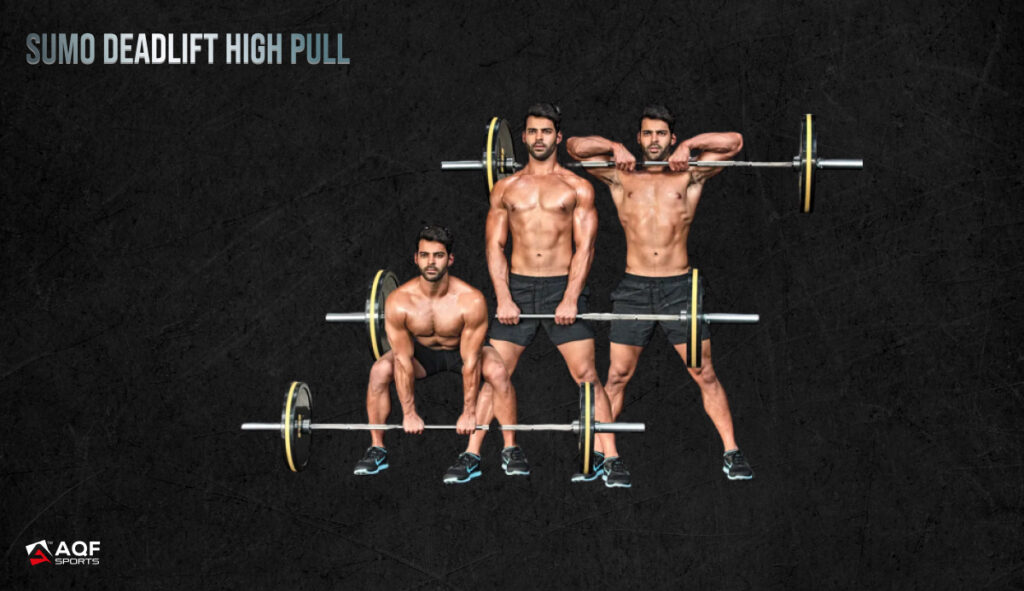
How to Do It:
- Bend at your hips and knees to lower the weight to the ground.
- Lift the weight explosively, keeping it close to your body.
- Pull it up to chest height, leading with your elbows.
Tips: Engage your butt and upper back.
6. Sandbag Good Mornings:
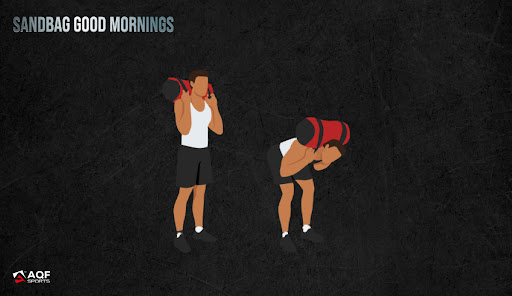
Setup: Put a sandbag on your upper back, holding it with crossed arms.
How to Do It:
- Bend at your hips while keeping your back straight.
- Lower your upper body until you feel your hamstrings stretch.
- Return to an upright position by using your lower back, butt, and hamstrings.
Tips: Focus on stretching and contracting your lower back and hamstrings.
Results to Expect from Pulling Exercises
Improved Upper Body Strength:
These exercises target major upper body muscle groups, leading to increased strength.
Enhanced Posture:
Strengthening the back and shoulder muscles can help correct posture issues.
Balanced Muscle Development:
Pulling exercises complement pushing exercises (e.g., bench presses) for a well-rounded physique. Moreover, pulling exercises activate several muscle groups notably the Lats, Traps and Biceps [2].
Suggested Read: 15 Best Compound Lifts and Exercises to Gain Muscle Mass
Reduced Risk of Injury:
A strong back and shoulders contribute to overall stability and injury prevention.
Functional Strength:
Pulling movements mimic daily activities like lifting, carrying, and pulling objects.
Attractive Physique:
Developing a strong back can enhance your overall physique.
Enjoy the Pulling Exercises Workout!
Pulling exercises involve pulling resistance towards your body and working key upper body muscles. They’re important for building upper body strength and improving posture. Examples include pull-ups and rows.
Add variety to your pulling exercises to promote balanced muscle development.
Here is another tip: Gradually increase resistance to overcome workout plateaus and don’t forget to blast your favorite workout music while you are at it!
Explore More Topics
- The Best Ways to Improve Grip Strength With Easy Exercises and Tips
- How To Lift Heavier Weights: Mistakes To Avoid & Tips To Follow
- Bro Split – The Ultimate Guide to 5 Day Bro Split Routine
- Strength Training 101 | The Ultimate Guide to Get Started
References
[1] Pulling Exercises for Strength Training and Rehabilitation: Movements and Loading Conditions
[2] A Comparison of Muscle Activation during the Pull-up and Three Alternative Pulling Exercises





